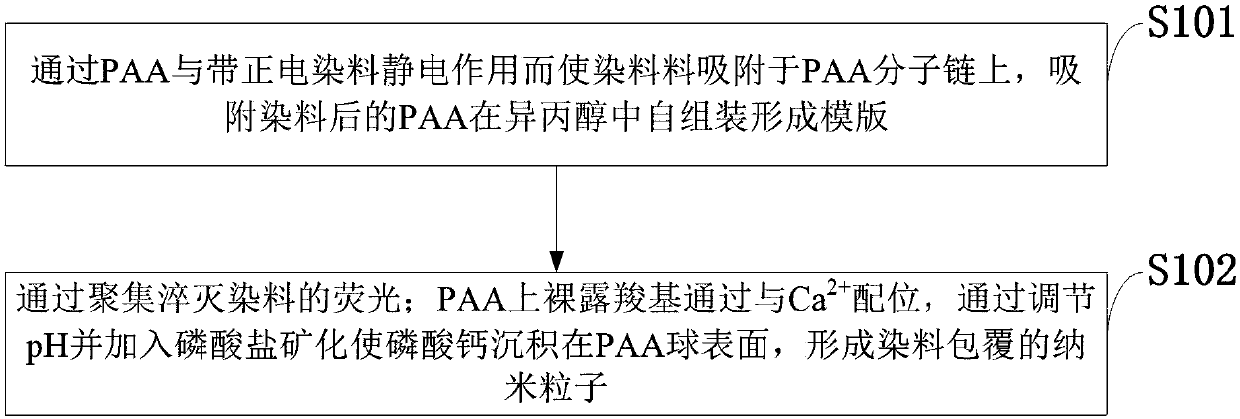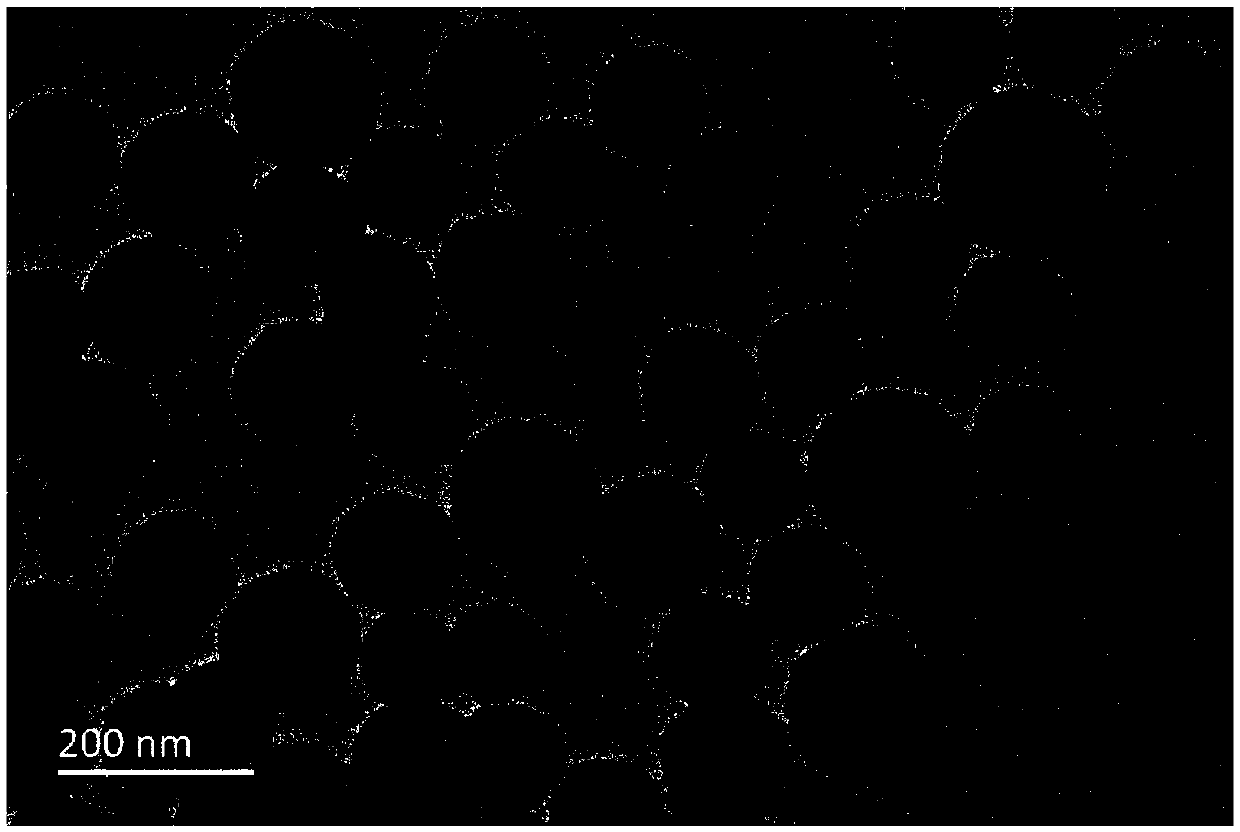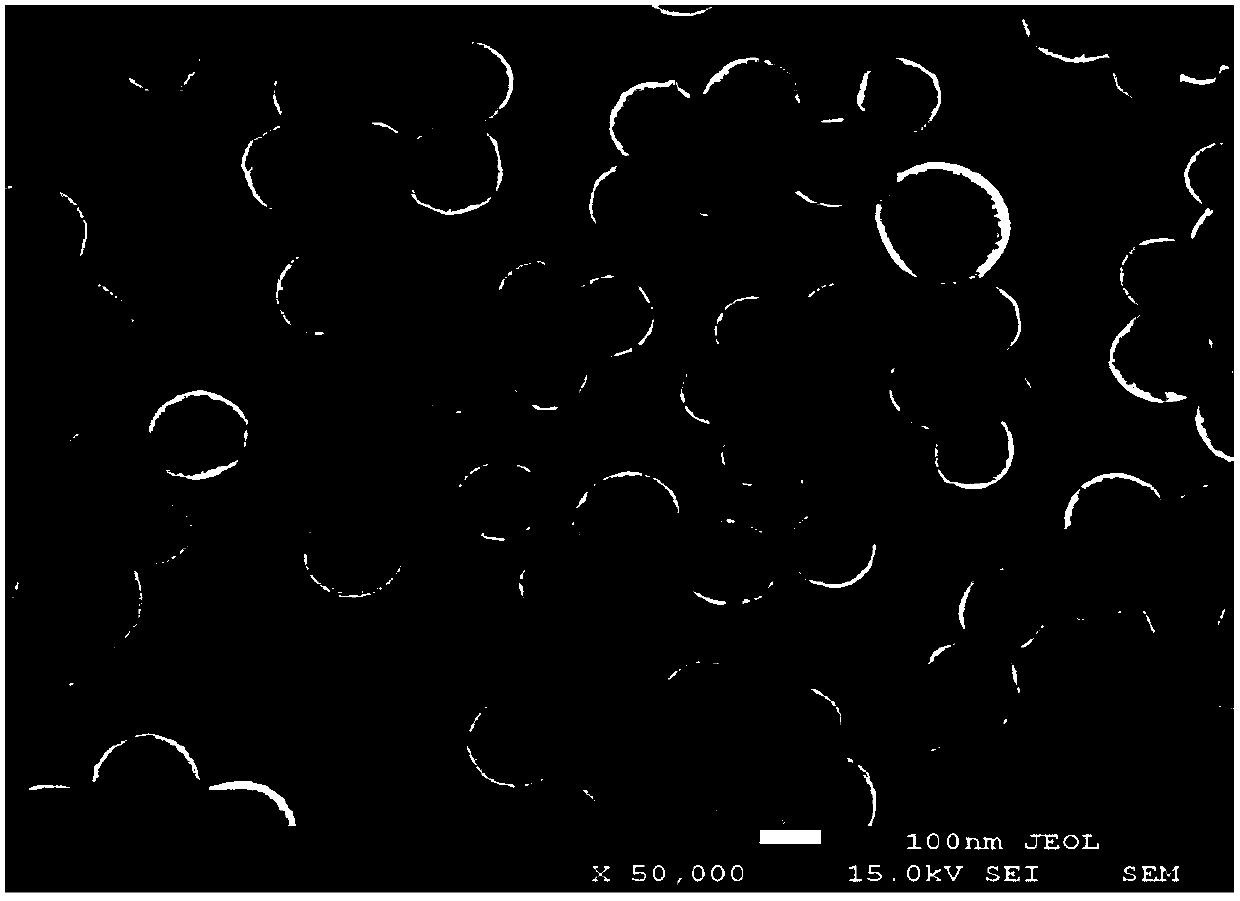PH (potential of hydrogen)-responsive type ultra-sensitive nanometer fluorescent probe and method for preparing same
A nano-fluorescent probe and ultra-sensitive technology are applied in the field of pH-responsive ultra-sensitive nano-fluorescent probes and their preparation, which can solve the problems of poor biodistribution specificity, poor photostability, and high background signal, and achieve improved imaging signal-to-noise ratio, Efficient enrichment, reducing the effect of background signal
- Summary
- Abstract
- Description
- Claims
- Application Information
AI Technical Summary
Problems solved by technology
Method used
Image
Examples
preparation example Construction
[0043] Such as figure 1 As shown, the preparation method of the pH-responsive ultrasensitive nanometer fluorescent probe provided by the embodiment of the present invention comprises the following steps:
[0044] S101: The dye material is adsorbed on the PAA molecular chain through the electrostatic interaction between PAA and the positively charged dye, and the PAA after the dye adsorption is self-assembled in isopropanol to form a template;
[0045] S102: The fluorescence of the dye is quenched by aggregation; the exposed carboxyl group on PAA passes through the interaction with Ca 2+ Coordination, calcium phosphate is deposited on the surface of PAA spheres by adjusting the pH and adding phosphate mineralization to form dye-coated nanoparticles;
[0046] The negatively charged matrix material can be calcium phosphate, calcium carbonate, calcium hydroxyphosphate, fluorapatite, etc., and the positively charged dyes used in this example can be IR780, RhB, IR800, etc. Synthes...
Embodiment 1
[0055] Preparation of CaP / IR780 nanoprobe
[0056] Synthesis principle: through the electrostatic interaction between PAA and IR780, the dye is aggregated to achieve fluorescence quenching. After the dye is adsorbed, PAA self-assembles in isopropanol to form a template. Calcium phosphate is deposited on the surface of PAA balls through mineralization to form CaP / IR780 nanoparticles.
[0057] Specific synthesis steps: 60-80 μL of 20% PAA (MW=2000) was dissolved in 10 mL of water, and 5-8 mg of Ca(OH) was added 2 Stir to make it dissolve, add 50~1000μg IR780, stir for 30min, and make it fully mixed. Slowly add 10~50mL isopropanol to form a milky white solution, add 6~9.6mg (NH 4 ) 2 HPO 4 Stir for 24 hours, centrifuge, wash 3 times with water, redisperse in 5mL water for later use. Particle size characterization by transmission electron microscopy (TEM), scanning electron microscopy (SEM) and dynamic light scattering (DLS), such as figure 2 , image 3 and Figure 4 sho...
Embodiment example 2
[0059] Preparation of CaP / RhB Nanoprobes
[0060] Synthesis principle: The dye is aggregated through the electrostatic interaction between PAA and RhB, thereby realizing fluorescence quenching. The PAA after the dye is self-assembled in isopropanol to form a template, and calcium phosphate is deposited on the surface of the PAA ball through mineralization, thereby forming CaP / RhB nanoparticles.
[0061] Specific synthesis steps: 60-90 μL of 20% PAA (MW=4500) was dissolved in 10 mL of water, and 5-10 mg of Ca(OH) was added 2 Stir to dissolve, add 100-1000μg RhB, stir for 30min, and make it fully mixed. Slowly add 30mL of isopropanol to form a milky white solution, add 6.2~12mg (NH 4 ) 2 HPO 4 Stir for 24 hours, centrifuge, wash with water 3 times, and redisperse in 5mL of water. In order to improve the stability of the nanoprobe and the circulation time in the animal blood, the surface of the probe is stabilized by PEG, thereby improving the stability of the probe. Add 5...
PUM
 Login to View More
Login to View More Abstract
Description
Claims
Application Information
 Login to View More
Login to View More - R&D
- Intellectual Property
- Life Sciences
- Materials
- Tech Scout
- Unparalleled Data Quality
- Higher Quality Content
- 60% Fewer Hallucinations
Browse by: Latest US Patents, China's latest patents, Technical Efficacy Thesaurus, Application Domain, Technology Topic, Popular Technical Reports.
© 2025 PatSnap. All rights reserved.Legal|Privacy policy|Modern Slavery Act Transparency Statement|Sitemap|About US| Contact US: help@patsnap.com



